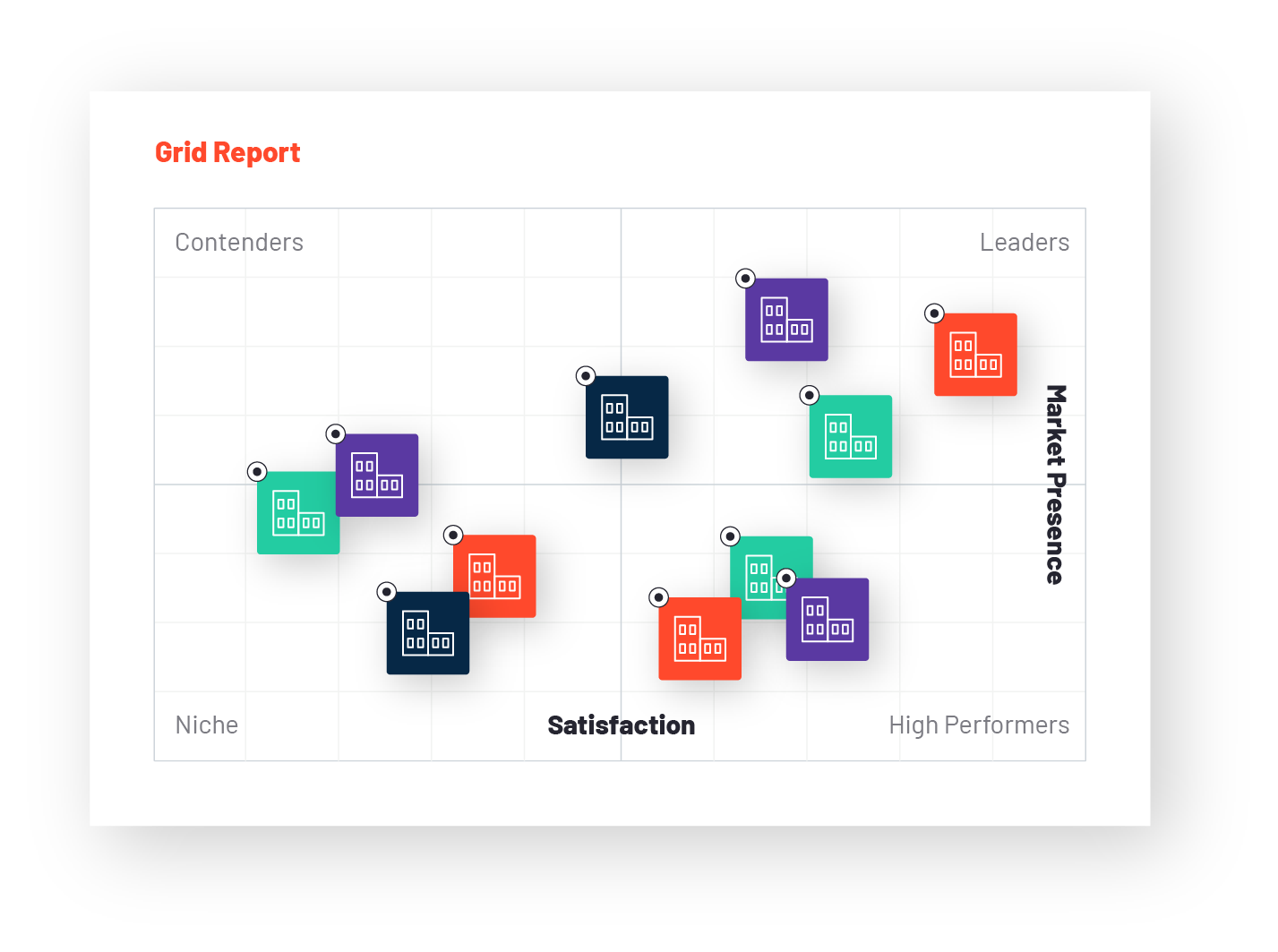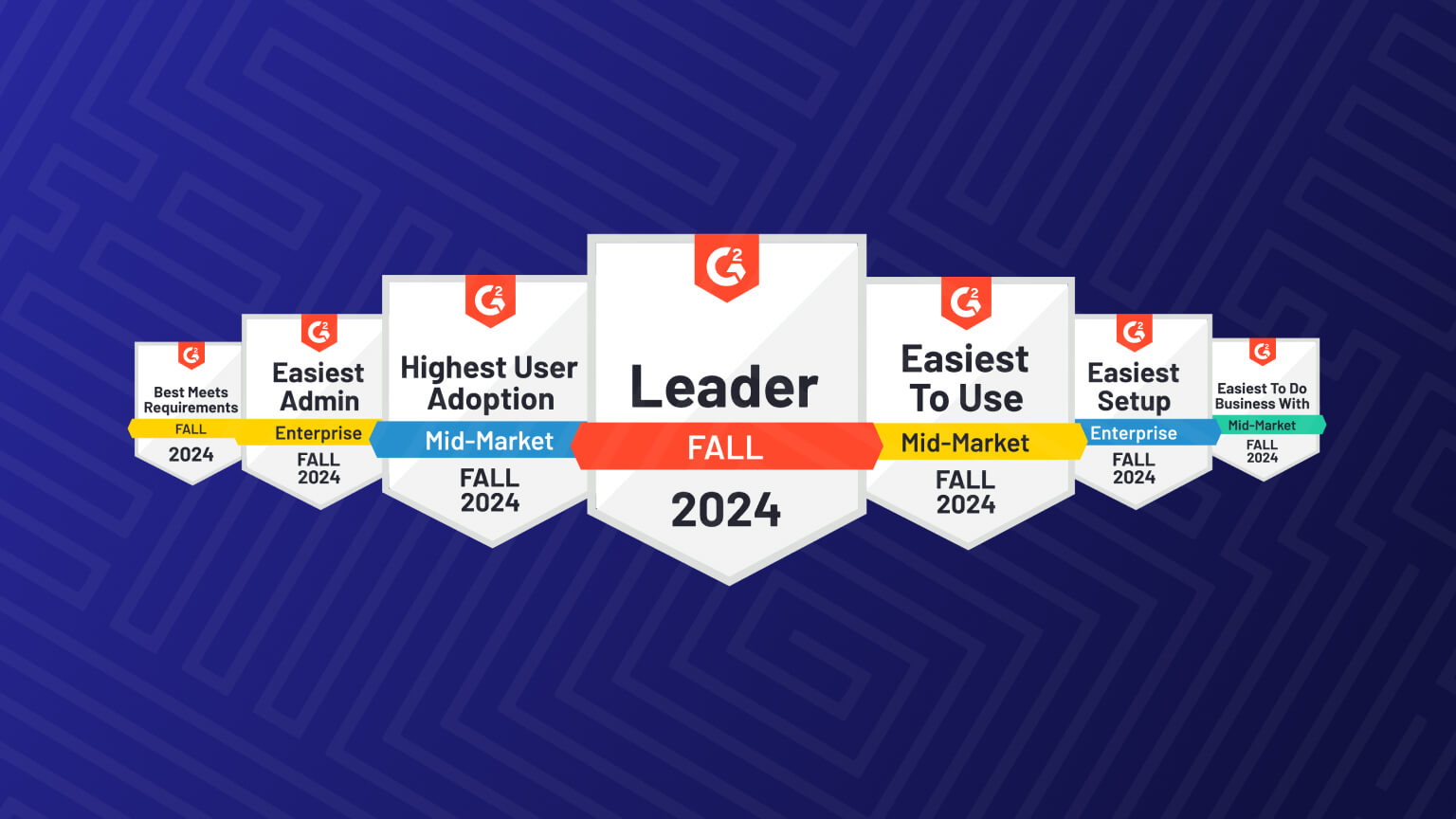Many software websites now prominently display G2 badges like "Leader" or "High Performer" – a credibility metric that shows potential customers that the solution can be trusted. But how exactly does a company earn these awards? Understanding G2's algorithm is crucial for any strategic directory presence in B2B software.
What is G2 and Why Does It Matter?
G2 is a B2B software directory and peer-to-peer review platform where real users share experiences with business software and services. The platform has published over a million user reviews across thousands of software categories. According to recent data, 49% of software buyers use peer reviews as a primary research source, often spending significant time on review sites before engaging with vendors.
G2 generates quarterly reports, visual grids showing competitive landscapes, and awards badges that companies use extensively in marketing materials. At Blastra, we see that a strong, consistent presence across software directories significantly boosts how these badges convert during buying journeys.
G2 Scoring: The Foundation
G2's scoring system determines where software appears in search results, category rankings, and competitive grids (source: G2 Research Scoring Methodologies):
G2 Score = (Market Satisfaction + Market Presence) ÷ 2
This score determines:
- Placement on G2's Grid reports (visual quadrants showing market position)
- Ranking within software categories
- Inclusion in quarterly market reports
- Eligibility for G2 badges and awards that appear on company websites
Important Context: Scores are normalized within each category, meaning software competes against similar solutions rather than the entire G2 marketplace (source: G2 Research Guidelines).
G2 Grid Reports: The Visual Competitive Landscape
G2 Grid reports are visual representations of software categories, plotting products on two axes: Market Satisfaction (vertical) and Market Presence (horizontal). This creates four distinct quadrants:
 Example of G2 Grid Report showing the four quadrants. Source: G2.com
Example of G2 Grid Report showing the four quadrants. Source: G2.com
- Leaders: High satisfaction + high market presence (top-right quadrant)
- High Performers: High satisfaction + lower market presence (top-left quadrant)
- Contenders: Lower satisfaction + high market presence (bottom-right quadrant)
- Niche: Lower satisfaction + lower market presence (bottom-left quadrant)
These grids are published quarterly for categories that meet minimum thresholds: at least 6 products with 10+ reviews each, and 150+ total reviews.
G2 Badges: Where They Come From
Those "G2 Leader" or "G2 High Performer" badges seen on software websites come from Grid report placements and specialized Index reports. G2 publishes focused Index reports measuring specific aspects like:
 Example of G2 badges awarded to LivePerson in Fall 2024. Source: LivePerson.com
Example of G2 badges awarded to LivePerson in Fall 2024. Source: LivePerson.com
- Usability Index: How easy the software is to use
- Implementation Index: How smoothly deployment goes
- Results Index: How well the software delivers outcomes
- Relationship Index: Quality of vendor relationships
The Two Pillars of G2 Scoring
Market Satisfaction: Measuring Customer Happiness
Market Satisfaction represents 50% of the G2 Score and measures actual customer contentment. G2 calculates this from multiple review-based factors:
High Impact Components:
- Total number of reviews (marked as "high importance" in G2's methodology)
- Review recency (reviews from the past 90 days carry the most weight)
- Likelihood to recommend scores (the 1-10 scale that becomes star ratings)
- Overall customer satisfaction and Net Promoter Score
- Quality of support ratings from users
- Ease of use, setup, and administration ratings
Key Detail: Review quality significantly impacts scoring. Thorough, detailed reviews from verified users receive higher weighting than brief, superficial responses.
Market Presence: Measuring Market Position
Market Presence also represents 50% of the G2 Score and assesses market position through 15 different factors combining review data with external metrics (source: G2 Research Scoring Methodologies):
High Impact Factors (in order of importance):
- Number of reviews (this factor impacts both score components)
- Recent review volume (past 90 days)
- Company employee count
- Company revenue figures
- Online presence metrics
- Social media following
- Third-party data sources
Critical Distinction: Product-specific metrics receive greater weight than general company metrics. Reviews specifically about the software product matter more than broad company information.
The Review Decay Factor: Time Works Against Everyone
Reviews lose influence over time through exponential decay following a specific pattern (source: G2 Research Guidelines). Maintaining a steady flow of up-to-date directory content reinforces credibility even as older reviews decay.
- 0-90 days: Reviews carry full weight
- 90 days-12 months: Moderate decay begins
- 12-24 months: Significant decay (approximately -30% annually)
- 24+ months: Reviews carry minimal weight
Real-World Impact: A software company that generated 100 reviews through a campaign 12 months ago would find those reviews now carrying roughly 70% of their original scoring weight.
Strategic Priorities: What Actually Moves Scores
Certain activities have disproportionate impact on scoring:
Highest Priority Actions
- Consistent Review Generation: Establishing ongoing collection processes rather than one-time campaigns (see our complete guide to G2 and Capterra review requirements)
- Recent Review Focus: Maximizing reviews within the critical 90-day window
- Review Quality Enhancement: Encouraging detailed, thoughtful responses over brief comments
- Organic Collection: Non-incentivized reviews receive bonus weighting in the algorithm
- Category Accuracy: Ensuring reviews are properly attributed to relevant software categories
- Company Data Maintenance: Keeping third-party profiles (LinkedIn, Crunchbase) current
Secondary Priority Actions
- Customer Segment Diversification: Collecting reviews across company sizes (small business, mid-market, enterprise)
- User Experience Optimization: Addressing friction points affecting ease-of-use scores
- Review Engagement: Responding to both positive and negative feedback
- Multi-Category Strategy: Optimizing for each relevant software category
Lower Priority Elements
- Social Media Metrics: Recently de-emphasized in algorithm updates (as of October 2024)
- Glassdoor Integration: Removed from Market Presence calculations as of 2024
- Twitter/X Metrics: Eliminated from scoring algorithm in recent updates
Common Pitfalls That Sabotage Success
Review Attribution Failures: G2 excludes reviews from users marked as "business partners," but the definition question often confuses customers. This can result in "silent failures" where reviews are collected but don't impact scoring.
Category Misattribution: Reviews get assigned to categories based on customer responses during submission. Software serving multiple categories must guide customers through these questions to ensure proper attribution.
Campaign Dependency: Many companies run single review campaigns and experience score drops over time due to decay. Sustainable success requires consistent, ongoing collection.
Incentive Over-Reliance: While incentivized reviews help with volume, organic reviews carry algorithmic advantages. The most effective strategies balance both approaches.
Free vs. Paid G2 Accounts: Scoring Reality
G2's scoring algorithm treats free and paid accounts identically. The methodology documentation is available to all vendors regardless of account type, and no scoring advantages come with paid subscriptions.
Paid Account Benefits:
- Detailed analytics and competitor benchmarking
- Advanced review management capabilities
- Licensed report access for marketing use
- Preview access to draft reports
- Enhanced profile customization options
Paid Account Limitations:
- No scoring algorithm advantages
- No review weighting benefits
- No ranking preference in results
Bottom Line: Companies can start with free accounts while focusing on fundamental scoring factors, upgrading later when advanced tools become necessary rather than for competitive advantages.
Implementation Framework: A 90-Day Approach
Weeks 1-2: Assessment
- Audit current G2 presence and scoring
- Map primary categories and competitive landscape
- Establish baseline metrics and tracking
- If you're centralizing multiple directory listings, choosing the right operational plan is essential — our pricing outlines the workflows most teams rely on
Weeks 3-6: Foundation Building
- Launch systematic customer review outreach
- Update external data sources (LinkedIn, Crunchbase)
- Begin review response strategy
Weeks 7-12: Optimization
- Implement sustainable review collection processes
- Segment outreach by customer characteristics and categories
- Monitor scoring changes and adjust tactics
Ongoing Operations:
- Monthly review collection activities
- Quarterly competitive analysis and scoring review
- Annual strategy assessment and category optimization
Key Success Patterns
Software companies that achieve top G2 positions maintain consistent review collection rather than sporadic campaigns, focus on genuine customer satisfaction over algorithm manipulation, and treat G2 success as ongoing rather than one-time effort.
Companies in "Leader" quadrants report using their G2 status throughout sales processes, while those in "High Performer" positions leverage their customer satisfaction strength. Even "Niche" positioning can be valuable when properly contextualized for specific market segments.
Sources
This analysis is based on publicly available G2 documentation:
- G2 Research Scoring Methodologies - Official methodology for calculating G2 scores
- G2 Research Guidelines - Standards and definitions for G2's research process
- G2 Content and Data Usage Guidelines - Guidelines for using G2 badges and content
- G2 Terms of Use - Legal terms governing G2 platform usage
Last updated: Based on G2 documentation as of January 2025
FAQ: Answers to Common Questions
How many reviews do I need to appear on G2 Grid reports?
G2 Grid reports require categories to have at least 6 products with 10+ reviews each, and 150+ total reviews in the category. For your individual product, having 10+ recent reviews is the minimum threshold for meaningful visibility. More reviews generally mean higher Market Presence scores.
Do paid G2 accounts get better rankings?
No. G2's scoring algorithm treats free and paid accounts identically. Paid accounts offer benefits like detailed analytics, competitor benchmarking, and enhanced profile features—but no scoring advantages. Focus on reviews and customer satisfaction before considering premium features.
How quickly do reviews lose their impact?
G2 applies exponential decay to reviews. Those from the past 90 days carry full weight. Reviews 90 days to 12 months old see moderate decay. After 12 months, reviews lose about 30% annually. After 24 months, they carry minimal weight. This is why consistent review collection beats one-time campaigns.
What's more important: review quantity or quality?
Both matter, but quality has outsized impact. Detailed, thoughtful reviews from verified users receive higher weighting than brief responses. Additionally, organic (non-incentivized) reviews receive algorithmic bonuses. Aim for substantive reviews from engaged customers rather than maximizing volume with shallow feedback.
Can I incentivize customers to leave reviews?
Yes, but with important caveats. Both G2 and Capterra allow incentivized reviews through official programs—G2 has paid review campaigns, Capterra offers gift cards up to $25. However, incentives must be for the act of reviewing, not for positive sentiment. Organic reviews also receive algorithmic advantages, so balance incentivized campaigns with natural collection.
Disclaimer: This article provides educational analysis of publicly available G2 methodology documentation. This content is not sponsored, endorsed, or affiliated with G2.com, Inc. G2®, G2 Grid®, and related trademarks are the property of G2.com, Inc.
You Might Also Like
- The Strategic Advantage of Directory Marketing: Why B2B SaaS Can't Afford to Ignore It - Learn how directory presence creates a competitive moat for your B2B SaaS
- How to Win Customers by Learning from Your G2 Competitor Reviews - Turn competitor reviews into your growth advantage
- Why SaaS Founders Should Skip Clutch (And Focus on Real Product Directories Instead) - Understanding the difference between service marketplaces and product directories
Use Blastra to submit your business to relevant software directories and manage your listings.

